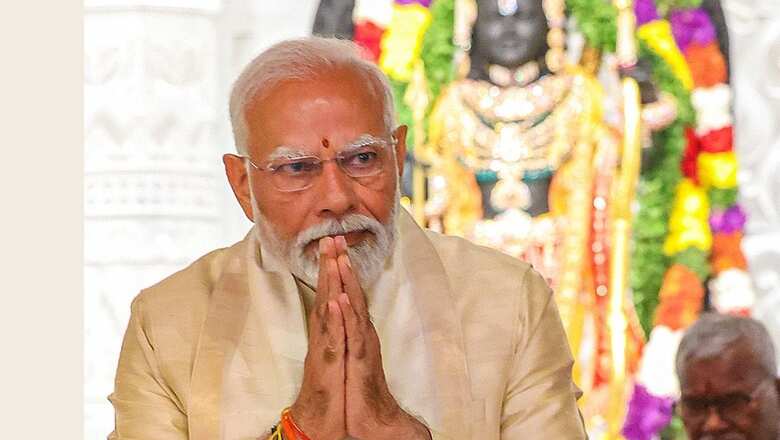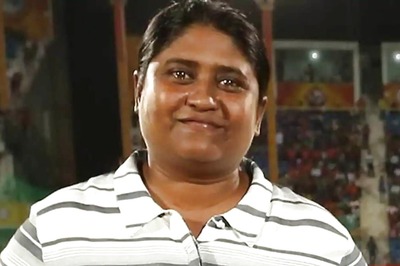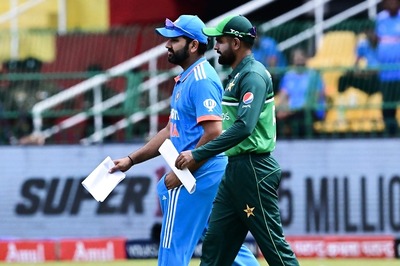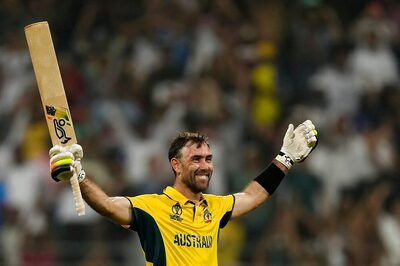
views
Every nation has events or years that stand out, shape its Republic, and even change it for good.
In Bangladesh, the language movement of 1952 was one such event, when it broke away from the shackles of Urdu dominance. For Nepal, it was the people’s movement, which culminated in ushering in democracy in the former kingdom in 2006.
For modern India, three events – the end of three eras — changed its course. From a Nehruvian India to the present-day Bharat reverberating with ‘Jai Shree Ram’, the phenomenal journey has changed India for good.
END OF NEHRUVIAN INDIA
India’s economic liberalisation began in the late 1970s, but economic reforms, in the true sense, didn’t begin until 1991. The country’s economy had to open up in 1991 due to a balance of payments crisis. The government was forced to review its trade policies to allow more foreign investment and reduce trade restrictions.
While the World Bank stepped in and an International Monetary Fund (IMF) loan was offered, India had to go for structural reforms. As a result, the Indian economy was opened up to foreign participation in various sectors, including state-owned enterprises. The license Raj gave way to competitive capitalism. Dr Manmohan Singh, who would years later come in as India’s Prime Minister, was brought in as the reformist Finance Minister.
What followed was the demise of a Nehruvian India that lasted beyond its time. On July 24, 1991, Dr Singh quoted Victor Hugo to announce the death of Nehruvian India in his budget speech, “I do not minimise the difficulties that lie ahead on the long and arduous journey on which we have embarked. But as Victor Hugo once said, “No power on earth can stop an idea whose time has come". I suggest to this August House that the emergence of India as a major economic power in the world happens to be one such idea."
END OF SCAM-RIDDEN INDIA
May 26, 2014 was the date that marked the end of a scam-ridden India as Narendra Modi, parliamentary leader of the Bharatiya Janata Party (BJP), started his first tenure after his swearing-in as the 14th Prime Minister of India.
It was preceded by an ugly five years of misgovernance, ridden with big-ticket scams that became synonymous with the UPA-2 rule.
India witnessed the Commonwealth Games (CWG) scam that unfolded in 2010, involving a pilferage of around Rs 70,000 crore that saw Suresh Kalmadi, Chairman of the organizing committee of the Games, go to jail. UPA-2 also saw Adarsh scam, in which a 31-storey apartment complex built in Mumbai’s Colaba for war heroes and war widows of the 1999 Kargil war ended up benefitting bureaucrats and relatives of politicians. In 2013, the Central Bureau of Investigation (CBI) charged then Maharashtra CM Ashok Chavan.
The biggest was probably the 2G spectrum allocation scam that was worth Rs 176,000 crore, according to the Comptroller and Auditor General (CAG), which sent the minister concerned, A Raja, to jail. However, what rocked the boat was the coal scam that reached the doorstep of the Prime Minister, who in 1991, had ushered in an open economy.
Newspaper headlines were dominated by scams and public angst was seen in massive street protests. When the Gujarat CM was sworn in as India’s Prime Minister, India saw the death of the scam era.
रामज्योति! #RamJyoti pic.twitter.com/DTxg2QquTT— Narendra Modi (@narendramodi) January 22, 2024
END OF BEING APOLOGETIC ABOUT FAITH
While Modi continued in power for nine years and delivered big-ticket reforms such as women’s quota or triple Talaq, India and Indians were by and large apologetic about expressing their faith. Although the Prime Minister often took dips in holy water and wore chandan on his forehead, it required a momentous buildup like the inauguration of a grand Ram Temple in Ayodhya to make Indians practising Hinduism junk the hesitation to chant ‘Jai Shree Ram’ aloud.
While Lord Ram found his temple after a 500-year-long wait, many practising Hindus found their voice to echo jubilation, shedding any inhibition. The days of being apologetic about practising one’s faith ended on January 22, 2024.
Urban India came to their balconies to hoist the saffron flag, rural India went to the temple to do pujas, and both lit diyas in the evening. From Bulandshahr to Bangalore and Dehradun to Delhi — India was suddenly seen expressing without being apologetic. Bikes in Noida, autos in Hyderabad to cabs in Mumbai were sporting their faith with pride.
The individual and collective inhibition was gone.


















Comments
0 comment